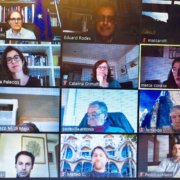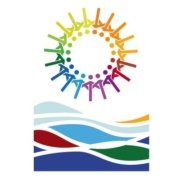The European railway system transports around 1.6 billion tonnes of freight each year. The railway is central to the EU’s strategy for a more sustainable transport sector, helping ensure economic and social cohesion and connecting Europeans within and between Member States.
The density of the national rail networks reflects the different geographical characteristics of the countries, with the Nordic and Baltic countries having the lowest rail network density on the continent.
Rail has the potential to play an important role in accelerating the reduction of transport emissions. “Rail only represented 2% of total transport energy consumption in the EU, while representing for 11.2% of freight and 6.6% of passengers in all modes of transport in 2016” (data from the Report from the Commission to the European Parliament and the European Council, 2019). However, rail freight also has a number of other advantages: improved safety of goods compared to other means, lower accident rates, more storage capacity as a large volume of cargo can be transported over very long distances, and the potential for intermodality, if necessary.
Maintaining and renewing the existing network to improve safety and operational performance as well as ensuring a reliable service is a major challenge for infrastructure managers, especially in the face of increased traffic and demanding performance targets set by national authorities and operators.
This results in a number of disadvantages that caused this means to not be one of the most used for the transport of goods. It is conditional on the existence of infrastructures that are non-existent in some European countries. In addition, this means that, unlike other means, there are very few occasions when it can reach the warehouse or the final destination of the goods without the help of complementary means (such as the road).
Mandatory Intermodality
Rail transport falls under the intermodality umbrella, as it requires road transport to chauffer the goods from the point of origin to the railways, and to their final destinations. Rail gauge: The width of the gauge can differ from one country to another, which can cause difficulties in the transhipment of goods, and thus result in a significant increase in the expense of money and time.
The EU’s railways continue to grow. Rail markets are gradually opening up and safety levels remain high. This sector is increasingly demanding in terms of performance, innovation and responsiveness to customer needs. Rail transport’s fight to increase its modal share remains centered around interoperability and cross-border coordination issues. Corridors are a key part of the Commission’s policy to boost rail freight. The Rail Freight Regulation and the train drivers Directive are still being evaluated in order to boost and facilitate rail transport.
Spain

In Spain, the railway represents around 4% of the total freight transport market. This market share has decreased in recent years in favour of road transport. Although part of this trend is common to other countries, the rail market share in Spain is much smaller. For example, rail represents 19% of the total goods market in Germany and 15% in France – nearly four times the Spanish equivalent.
If the sector can convince transporters to opt for rail motorways to reduce costs, and get exporters and importers to bring their goods to the ports through the use of the rail, it is likely to grow in the coming years.
To improve international rail freight traffic, France and Spain have re-launched two rail motorways between the two countries, through a call for expressions of interest. This marks the first step in finding out whether or not the infrastructure is viable in the region.
Intrigued? The Escola organises courses focusing in particular on maritime rail and maritime-road intermodal solutions, called SURCO. Contact us if you’d like to know more and to find out when the next courses will take place.
Written by:
- Raquel Nunes – Co-founder of Youngship Portugal






